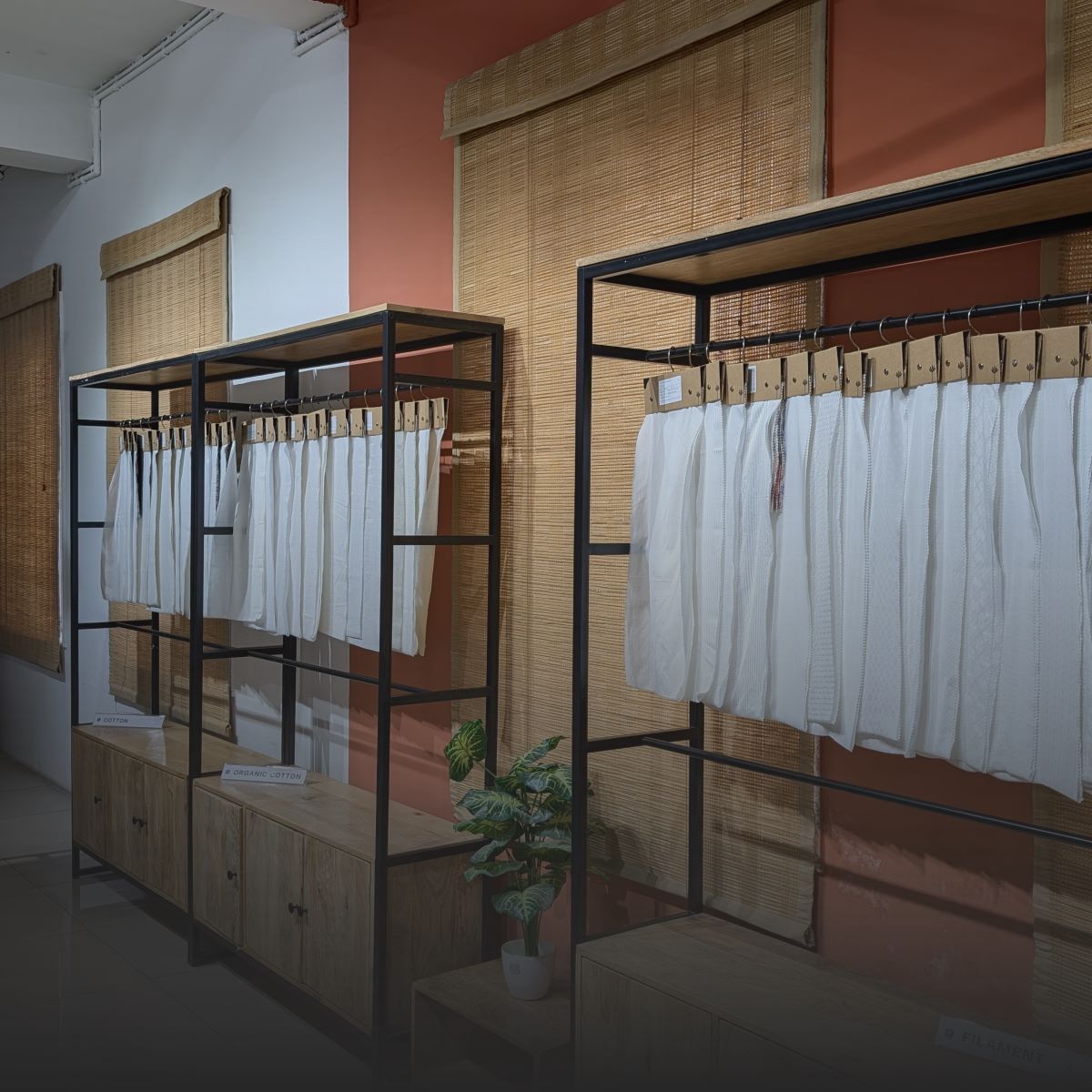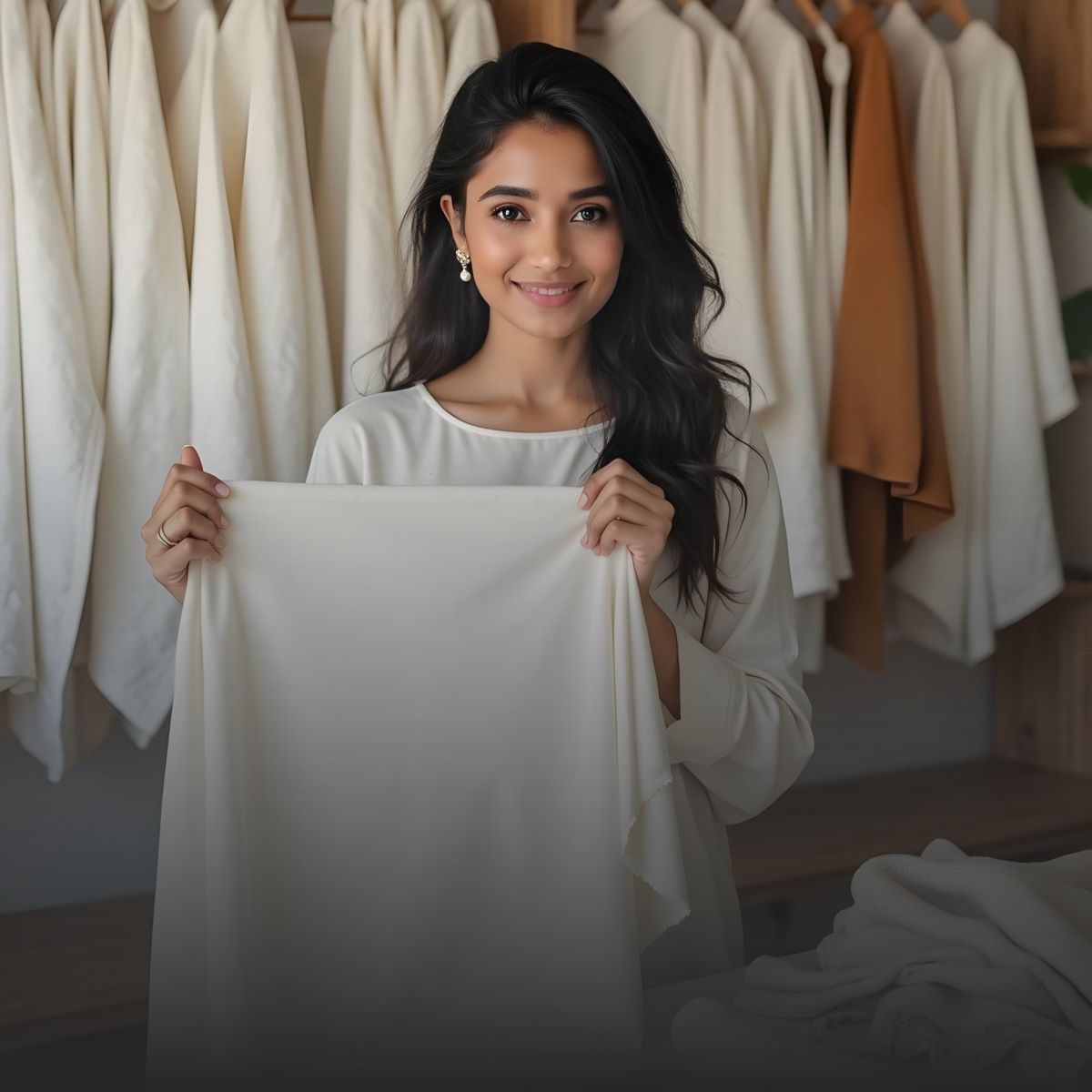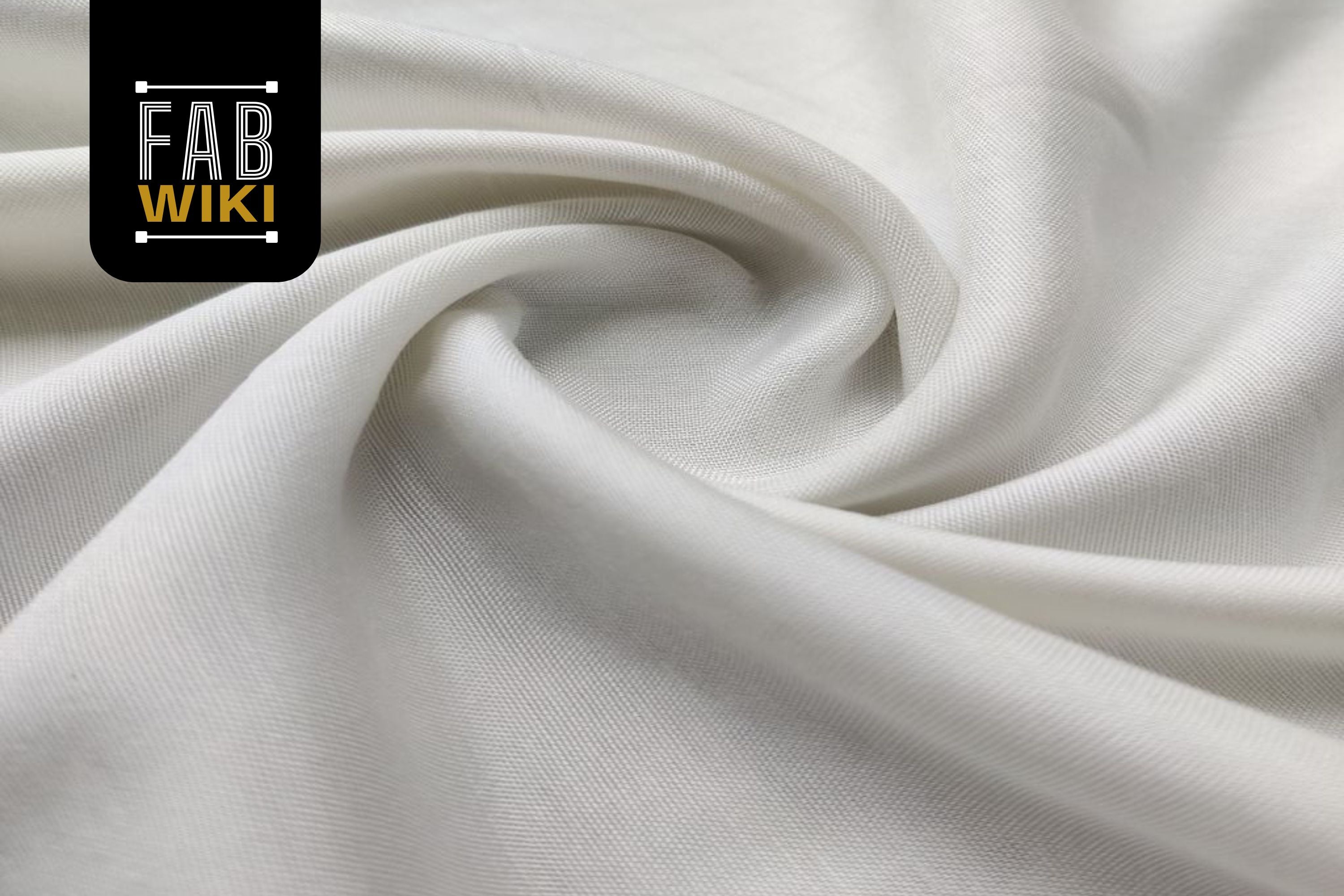Melton wool fabric has long been celebrated as one of the most durable, premium, and functional textiles used in outerwear and structured apparel. From military coats and heritage uniforms to luxury winter jackets, pea coats, overcoats, and fashion-forward capes, Melton has maintained its iconic position for centuries.
Today, melton wool is widely sourced by fashion brands, global apparel manufacturers, private labels, tailoring houses, and uniform suppliers due to its unmatched warmth, dense felted texture, wind resistance, and high-end aesthetic appeal. Its rich history, filtered through modern manufacturing, makes it a fabric category that designers confidently rely on for winter apparel and premium outerwear.
This comprehensive guide covers the complete technical, functional, and sourcing foundations of Melton Wool Fabric.
What Is Melton Wool Fabric?
Wool fabric that is densely woven and heavily felted is called "Melton wool fabric." It has a "smooth surface, matte finish, and excellent wind and weather resistance." Traditionally made from 100% wool, newer versions may include wool-polyester blends to save money and make the garment last longer.
Core Characteristics of Melton Wool
- Dense weave (tight twill or plain weave)
- Felted and heavily fulled to reduce porosity
- Smooth, non-directional surface (almost suede-like)
- Naturally warm and insulating
- Windproof due to compact structure
- Highly durable and long-lasting
- Structurally rigid — ideal for outerwear
Melton wool originated in Great Britain, specifically the town of Melton Mowbray, and became widely used for hunting jackets, riding coats, naval uniforms, and winter outerwear.
Why Melton Wool Is Popular Among Designers & Apparel Brands

Melton wool will continue to be the best in winter collections thanks to its technical strengths and economic dependability. It's where performance, style, and business identity all come together.
Key Advantages
- Premium winter fabric suitable for both luxury and mass-premium categories
- Incredible warmth due to wool's natural insulation and the felted construction
- Wind-resistant — ideal for outdoor and cold-climate apparel
- Long lifespan reduces returns and enhances customer satisfaction.
- Low maintenance compared with delicate woollen fabrics
- Structured drape is suitable for coats, jackets, and uniforms.
- Smart branding value for winter and heritage-inspired collections
Brands also prefer melton wool because it holds its shape over time, making it a practical and aesthetic win for retail, export manufacturing, and private labels.
Melton Wool vs Other Winter Fabrics
A comparison helps clarify when Melton is the best choice.
|
Fabric Type |
Key Traits |
Best Use Cases |
|
Melton Wool |
Dense, felted, windproof, structured |
Coats, uniforms, pea coats |
|
Wool Flannel |
Softer, lighter, fuzzy surface |
Suits, trousers |
|
Boiled Wool |
Lightweight, stretchy, textured |
Cardigans, soft jackets |
|
Cashmere Wool |
Ultra-soft, luxurious |
High-luxury coats |
|
Felt Fabric |
Non-woven, stiff |
Craft, accessories |
|
Tweed |
Rough texture, open weave |
Jackets, caps |
Melton wool wins for durability, wind protection, and structured silhouettes.
Types of Melton Wool Fabric
Different variants suit different markets and garment categories.
|
Type |
Composition |
Characteristics |
Best Applications |
|
100% Wool Melton |
Pure wool |
Highest warmth, premium quality |
Luxury coats, military-inspired fashion |
|
Wool-Poly Melton |
60/40 or 70/30 blends |
More affordable, durable, less prone to shrinkage |
Uniforms, mass winterwear |
|
Lightweight Melton |
Wool or blends |
Less dense, easier drape |
Fall jackets, women’s outerwear |
|
Heavy Melton |
Dense wool blend |
Very warm, stiff, structured |
Overcoats, pea coats, naval jackets |
|
Stretch Melton |
Wool + nylon + spandex |
Added flexibility |
Modern fitted coats |
|
Recycled Melton Wool |
Recycled wool fibers |
Sustainable, eco-primary |
Eco-luxury jackets & winterwear |
GSM / Weight Guidance for Melton Wool Fabric
GSM determines warmth, stiffness, drape, and category suitability.
|
GSM Range |
Description |
Ideal Use |
|
300–350 GSM |
Lightweight Melton |
Early autumn jackets, women’s overlays |
|
350–450 GSM |
Medium-weight Melton |
Standard coats, blazers, capes |
|
450–650 GSM |
Heavy Melton |
Pea coats, military coats, winter outerwear |
How Melton Wool Fabric Is Made – Technical Process
The production of Melton wool involves multiple specialised textile processes that give the fabric its signature dense and smooth body.
1. Fibre Selection
According on the type:
- Worsted wool → smoother finish
- Woollen wool → warm and bulky
- Polyester blends → durability and cost efficiency.
2. Spinning & Yarn Prep
- Yarn count ranges from medium to heavy.
- With a little hairy texture, felting is easier.
3. Weaving
Common weaves:
- Twill weave (more durable)
- Plain weave (classic Melton)
4. Fulling (Felting)
This is the heart of Melton production.
The woven cloth is subjected to:
- Heat
- Moisture
- Agitation
This shrinks the fabric, closes gaps between fibers, and forms a dense felted layer.
5. Napping & Shearing
When you nap, fibers on the top rise.
When you shear them, you trim and smooth them out so they look clean and suede-like.
6. Finishing
Depending on use:
- Water-repellent finish
- Anti-pilling finish
- Steam pressing
- Decatising for dimensional stability
Applications of Melton Wool Across Categories
Designers across global markets choose Melton wool because it instantly elevates any winter silhouette with structure and luxury. Whether you're developing premium coats or uniform programs, this fabric delivers reliability, warmth, and timeless appeal.
|
Category |
Recommended Melton Variant |
Why It Works |
|
Winter Coats & Overcoats |
450–550 GSM wool Melton |
Maximum warmth + structure |
|
Pea Coats & Naval Jackets |
Heavy Melton |
Traditional military-grade performance |
|
Capes & Cloaks |
Medium-weight Melton |
Beautiful drape with structure |
|
Uniforms |
Wool-poly Melton |
Durable + color-stable + cost-efficient |
|
Blazers |
Lightweight Melton |
Sharp appearance, strong fall |
|
Accessories |
Offcut Melton |
Hats, gloves, bags |
Melton wool is preferred wherever structure, warmth, and premium aesthetics are required.
Dyeing, Printing & Customisation Options
Fashion brands appreciate Melton wool because it allows deep shades, refined finishes, and performance enhancements without compromising its signature smooth structure. With the right fibre blend, you can customise both look and functionality with precision.
Melton wool is customisable depending on fibre content.
Dyeing Methods
Each dye method works with different types of fibers to make sure that the colors last and look great.
- Wool Melton: Acid dyes, vat dyes
- Poly-blends: Disperse dyes
- Recycled wool: Needs controlled dye techniques
Customisation Possibilities
These adjustments help brands tailor Melton for warmth, structure, performance and cost efficiency.
- GSM adjustment
- Colour customisation (Pantone matching)
- Twill vs plain weave
- Water-repellent finishing
- Brushed or extra-smooth face
- Stretch enhancement
- Width customisation
Sourcing Melton Wool Fabric – Step-by-Step Guide
A structured sourcing process ensures your Melton wool meets durability, shade uniformity, and performance expectations across bulk runs. This workflow is especially valuable for winter collections, uniforms, and export manufacturing.
Melton wool is customisable depending on fibre content.
A professional sourcing workflow ensures consistency and quality.
Step 1: Define Technical Specifications
An intense brief helps mills produce consistent lots across bulk production.
Include:
- Fibre composition
- GSM
- Finish (WR, anti-pilling, decatised)
- Width
- Colour (Pantone)
- End-use category
Step 2: Request Swatches
Swatches help you assess surface finish, warmth, structure and feel in real time.
Evaluate:
- Surface smoothness
- Rib structure
- Weight and drape
- Warmth and density
Step 3: Approve Lab Tests
Testing makes sure that foreign markets get products that last, stay stable, and wear well.
Important tests:
- Abrasion resistance
- Pilling
- Shrinkage
- Colourfastness
- Seam slippage
Step 4: Confirm MOQ & Lead Times
MOQ flexibility helps both emerging labels and global programs plan their production cycle.
Typical MOQs:
- 50–100 m → small brands
- 300–500 m → bulk manufacturing
Step 5: Production Monitoring
Uneven felting and variances in shade can be avoided by performing consistent checks.
Look:
- GSM uniformity
- Colour consistency
- Felted surface smoothness
Step 6: Final Inspection
Critical for quality control before garments move into cutting and stitching.
Inspect rolls for:
- Even surface
- No streaks
- No bald patches
- Dimensional accuracy
Common Challenges & Solutions
Like any premium wool fabric, Melton can face issues related to dyeing, finishing or fibre selection. Addressing these early ensures smooth production and fewer rejections during bulk manufacturing.
|
Challenge |
Reason |
Solution |
|
Colour variation |
Different lots |
Strict lot matching |
|
Pilling |
Low-quality fibres |
Use long-staple wool |
|
Stiffness |
Hard finishing |
Apply softening finish |
|
Shrinkage |
Inadequate pre-finishing |
Pre-shrunk processing |
Care Instructions for Melton Wool
Proper care extends the lifespan and appearance of Melton wool garments, making them look premium across seasons. These simple points below help consumers retain the structure and smooth finish Melton is known for.
- Dry-clean only (for wool-heavy variants)
- Spot clean for stains
- Avoid harsh detergents
- Steam, don't iron directly
- Store in breathable garment bags
- Avoid high heat
Proper care ensures long garment life.
Final Thoughts
Melton wool fabric has timeless craftsmanship, unbeatable winter performance, and a premium aesthetic for heritage and modern garments. Melton wool's durability, structure, warmth, and luxury feel make it a preferred choice for outerwear designers and sourcing teams.
Choosing the right supplier, defining technical specifications, and controlling finishing quality ensures Melton wool garments deliver exceptional value—whether for retail, uniform programs, or private-label lines.
FAQs
1. What Is Melton Wool Used For?
Melton wool is used for winter coats, pea coats, structured jackets, uniforms, and capes due to its dense, felted construction that offers exceptional warmth and wind resistance.
2. Is Melton Wool Warm Enough for Winter?
Yes. Heavy Melton wool (450+ GSM) provides excellent insulation and wind protection, making it ideal for harsh winter climates and cold outdoor environments.
3. Is Melton Wool Itchy?
High-quality Melton wool has a smooth, felted finish that makes it less itchy than typical wool fabrics. Blended or premium-grade variants are even softer.
4. Can Melton Wool Be Washed?
Pure wool Melton should be dry-cleaned to prevent shrinkage. Polyester-blend Melton may tolerate gentle washing, but dry cleaning is recommended.
5. Is Melton Wool Expensive?
Melton wool is more premium than basic wool fabrics due to its dense structure and finishing processes, but blends make affordable options available for mass production.



